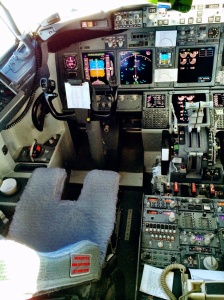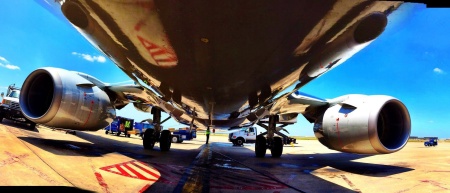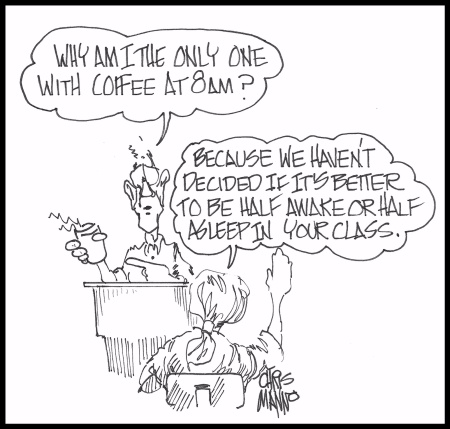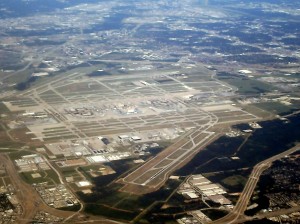
So, you’ve decided that being a pilot might suit you and you’re embarking on flying lessons. Good for you. Here are some off-the-books lessons I’ll share with you based on my 20,000 hours as a pilot. You probably won’t read these elsewhere because they’re not the typical media hype nor the hobbyist pilot bravado. But these lessons are fundamental to your understanding of the pilot world you propose enter.
1. Expect resistance, both from within and without. First, from without: your family and friends are concerned about you and any risks you might take. They probably haven’t considered flying as you have, evaluating the risks and benefits, and many have either never thought about becoming a pilot themselves, or did think about it and decided against learning to fly. Also, there’s the expense, in both dollars and time.
Flying lessons require a lot of both and those around you may resist losing that time with you, plus they may be negative about you committing to flying the time and budget that will necessarily limit your ability to do things like go out or vacation with them (are YOU ready to switch your budget priorities?) and also, force you to rearrange your free time schedule.
Parents and partners particularly may worry about the risks (remember, they haven’t been educated about the admirable safety record of general aviation as you have) as well as the expense, which is significant, especially given that you don’t know yourself yet if flying really suits you.
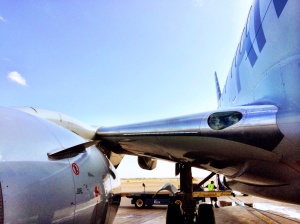
All of that external resistance is understandable and rather than becoming frustrated, become an educator: explain the safety record of such faithful and timeless standards as the Cessna 150 or 172 or whatever you’re flying. Describe the incremental steps of a flight training syllabus with a qualified instructor. Yes, there’s a significant financial commitment required and no, you’re not certain that the cost will be borne out by a lifetime in aviation. Nonetheless, you’re now at a point where finding out makes sense, and you can simply walk away at any point if you find that flying doesn’t suit you.
Internal resistance? That’s YOU. How good are you at the disciplined pursuit of a longterm goal, which proficiency as a pilot certainly requires for as long as you intend to fly? Recurring, never-ending demands of ratings, physicals, and training lie ahead–is that a challenge you typically embrace? Do you follow through on your plans, especially those requiring the consistent grunt work being a decent pilot demands?
There’s more. Physically, your body is entering a foreign environment of new challenges, from new and unfamiliar motor requirements of three dimensional movement to the vestibular sensations of movement in three axes. As one of my profs at the USC Flight Safety Center liked to say, no matter what cosmic jet we fly, we’re still just a “basic two mile per hour human,” physically evolved to walk on land–not fly.
Don’t let that stop you, or even slow you down: you’ll likely feel inept, maybe klutzy, your first few hours at the controls but that’s normal–we all go through that because you’re transcending the thousands of years of evolution and learning new reflexes and unnatural physical response. Give yourself a break. Don’t judge the entire pilot experience by the early struggles because they will smooth out with time.

2. Once you start flying, DON’T fly in your head. Let me explain: do your headwork BEFORE flight–learn the procedures and subjects pertinent to your aircraft and area. In flight, GET OUT OF YOUR HEAD and fly, period. The knowledge is still there for you to call upon, but the more important lessons are to be had physically: pay attention to the flight, what is actually happening versus what you expected or what you were told.
We don’t fly in books, tapes, sim programs or DVDs–we do it in the sky, in the weather, the wind and ambient conditions. That’s where your air sense is forged.
Don’t get me wrong: be obsessive about your preflight prep–devour pertinent training materials, study, memorize and review. In USAF Flight School, we called it “chair flying:” we’d physically talk through and do the hand motions required to effect each maneuver on the syllabus for a particular flight. That’s to forge patterned thinking and muscle memory, two things key to the physical performance required in the air. Sounds silly? Did you know the USAF Thunderbirds do exactly that as a group, in their preflight briefing room? That’s because muscle memory is key to successful flight maneuvers. This will boost your learning as well as your performance. Reinforce this concept on the ground, study, learn, review, practice.
In the air–fly. Get out of your head, trusting that if you’ve studied and reviewed hard enough beforehand, it’s all still crammed onto your cerebral hard drive, ready to be called on from the background. In the foreground: FTFA (Fly The F*cking Airplane) which simple as it sounds, is not always easy to focus on. Which brings me to point #3.
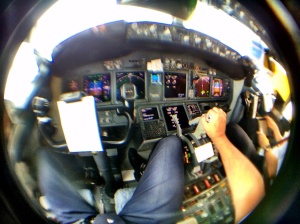
3. The aircraft is your best teacher. Sure, you’ve read the materials, studied, and you have an instructor talking in your ear through every new maneuver. Still, what’s the airplane telling you through your hands, feet, and its response? If you try to correct things based on books or talk, even from your instructor, give priority to what the aircraft is telling and showing you. I didn’t say ignore the rest, just prioritize the actual flight results.
Even now as a captain with thirty years at the world’s largest airline, I see copilots mystified by why some formula they use for descent or intercepts is not working out in realtime. I have only one answer: FTFA. Because I don’t know or care what component of the complex mix of time, speed, distance and altitude is screwing any formula, because again, we don’t fly on paper–we fly in the living, breathing, ever-changing sky in a unique aircraft that resists the one-size-fits-all mentality of formulas and gouges.
Same with your flight training: know the procedures and processes cold (study, review ON THE GROUND), listen to your instructor, but first and foremost, FTFA–feel what it’s telling you, then you fly IT, not vice versa–whatever it takes, aileron, rudder, elevator–DO IT.
4. Finally, a word about consistency. In an undertaking like flight lessons, DO NOT underestimate the powerful force of consistency in all matters, from the aircraft to instructor to airport, environment and even flight time. Minimize changes to all of these key factors in order to maximize your learning and developmental skills. As important, minimize training gaps, especially when you’re just developing the required physical adaptation and muscle memory flight training demands. Even now, if I take a two week vacation, I’m a little rusty on my first flight back. When you’re just learning, training gaps will only add to your frustration and slow your learning.
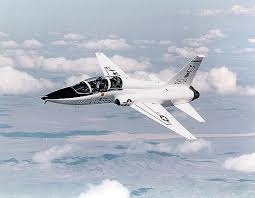
My T-38 instructor pilot told me the Air Force could teach a monkey to fly if they had enough bananas. His point was, they don’t–and neither do you: flying is expensive in both dollars and time. Keep the above points in mind to get the most out of your flight training and to make the endeavor as smooth and enjoyable as possible. Your family and friends will come around, accepting your flight endeavors as you successfully solo and progress steadily toward your pilot rating.
The rest is up to you. Welcome to the pilot world–and as we say to each other, fly safe and, I always add, fly smart.
✈️ Chris Manno






























